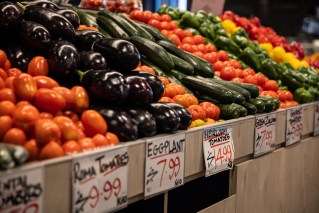Regional and vulnerable communities left behind as banks close branches


Banks have been criticised for closing branches too quickly.
Banks have permanently closed almost 300 branches since the onset of the pandemic as customers switched to their phones and computers.
The nation’s largest institutions have described the trend as a natural response to the declining popularity of face-to-face banking due to shifting consumer preferences.
But there are concerns the banks have rushed the transition and left regional communities and vulnerable Australians without access to an essential service.
Finance Sector Union secretary for Victoria and Tasmania Nicole McPherson said it was “disingenuous” for the banks to claim they were solely reacting to changing consumer behaviours, as “the banks had been the ones to cause people to have to bank online”.
She said bank employees were effectively asked to make themselves redundant by “aggressively” pushing customers who visited physical branches to sign up to online banking.
Retirees, regional communities, Australians with disabilities, customers from non-English-speaking backgrounds, and Indigenous Australians have been hit hardest. And some towns no longer have a bank or ATM.
Ms McPherson said the banks had used the pandemic as a scapegoat to accelerate existing plans to close down branches and had failed to meet their community obligations in the process.
Although she said the union understood banking had “to evolve to keep pace with what customers in the community are seeking”, she expressed concern that banks were shutting branches too quickly and leaving many Australians without access to an essential service.
“We think that everybody should have access to banking services within a reasonable distance of their home, in a way that’s going to work for them,” she said.
The union secretary said rather than close branches, banks could have shortened opening hours to drive down operational costs.
Since the start of last year, banks have informed the union of 298 branch closures.
However, NAB retail banking executive Krissie Jones said the bank’s investment in services and locations was driven by customer behaviour, with 93 per cent of customer interactions now taking place over the phone, by video, or online.
She said the bank had experienced a 30 per cent reduction in basic servicing and over-the-counter transactions in its branches over the past year.
NAB closed 43 branches over the 12 months to March and says it gave regional and rural communities 12 weeks’ notice before closing each branch. (The FSU says another two branches are earmarked for closure).
A spokesperson from Commonwealth Bank also said the bank made changes to its branch footprint based on shifts in consumer demand, noting the pandemic had “accelerated a continuing shift in consumer preferences toward digital and contact centre services”.
“If we do close a branch, we provide customers with at least six weeks’ notice where our branch team remain on hand to help familiarise customers with all the alternative local banking options available,” they said, adding that the bank offers a range of in-person services via 3500 participating Australia Post outlets.
CBA has closed 32 branches since the beginning of the pandemic, while ANZ and Westpac have closed or earmarked for closure 131 and 53 respectively, the FSU says.
“In recent years we have seen a significant shift in customers preferring digital options to do everything from ordering food and getting school newsletters to doing their banking, which is convenient and secure,” an ANZ spokesperson said.
“Last year alone, 70 per cent of our customers preferred digital banking options. Even our few remaining passbook customers have been choosing to use debit cards for the first time.”
Earlier this month, Westpac announced the closure of a further 39 metro branches and one regional branch where there is an alternative about five kilometres away.
The branches will permanently cease trading between July and October, and 21 are already temporarily closed in response to COVID-19.
“Westpac continues to follow our customers by investing in the ways they are choosing to bank,” a spokesperson said.
“This follows a seismic shift toward digital and cashless banking, and declining foot traffic in bank branches, particularly in urban and metropolitan areas.”








